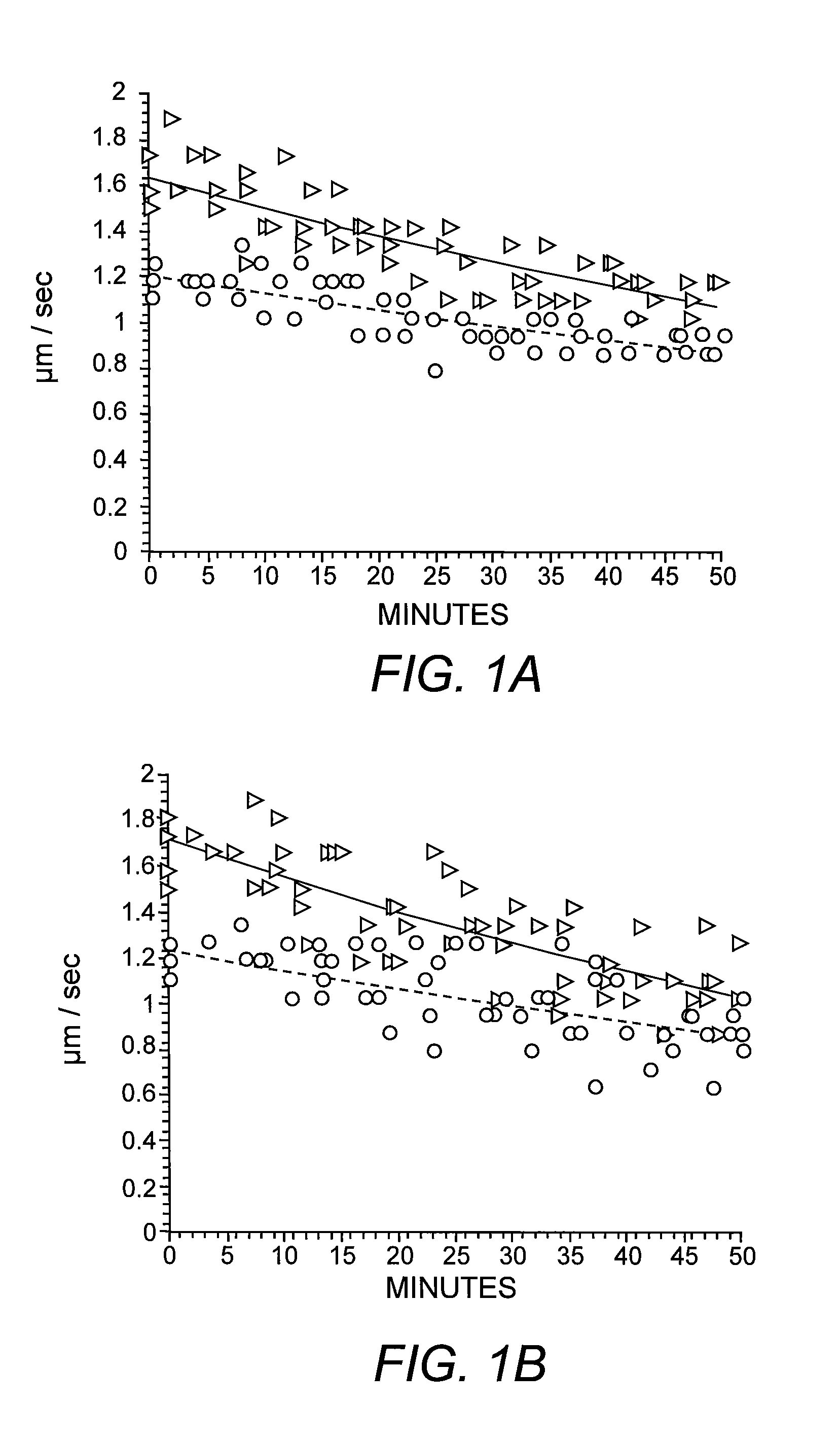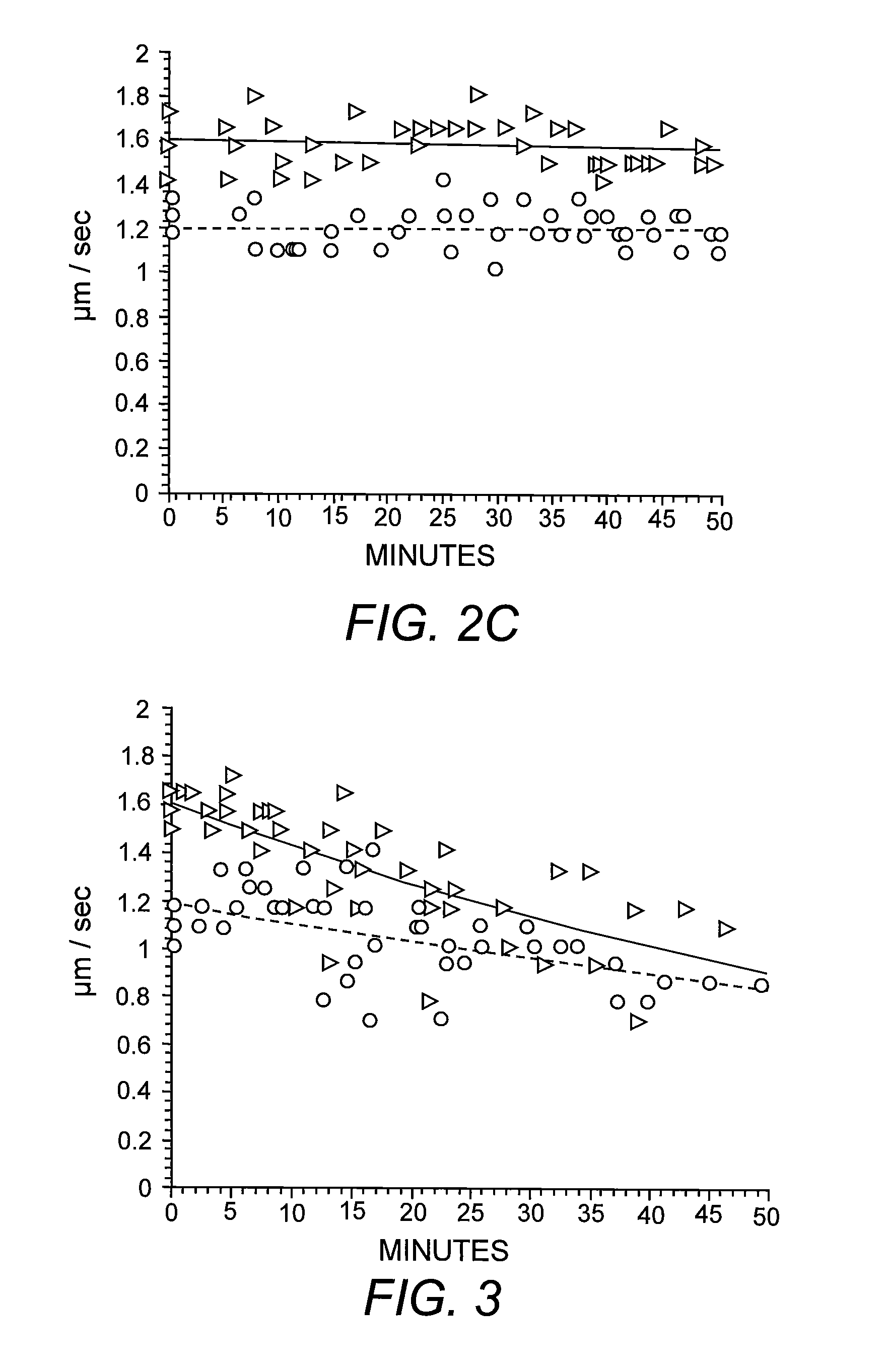Compositions and Methods for Treating a Disease Mediated by Soluble Oligomeric Amyloid Beta
a technology of oligomeric amyloid beta and amyloid beta, which is applied in the field of compositions and methods for treating a disease mediated by oligomeric amyloid beta, can solve the problems of the most challenging disorders faced, and achieve the effect of restoring fast axonal transpor
- Summary
- Abstract
- Description
- Claims
- Application Information
AI Technical Summary
Benefits of technology
Problems solved by technology
Method used
Image
Examples
example 1
Materials and Methods
[0044]Antibodies and Reagents. Antibodies used in this analysis included H2 monoclonal antibody (mAb) against kinesin-1 heavy chains (Deboer, et al. (2008) Biochemistry 47:4535-4543); 63-90 mAb that preferentially recognizes dephosphorylated kinesin-1 light chains (Morfini, et al. (2002) supra); and TrkB rabbit polyclonal antibody from Santa Cruz Biotechnology. Protein kinase inhibitors were from Calbiochem including SB 203580, CK2 inhibitors (DMAT and TBCA, tetrabromocinnamic acid). Inhibitors were diluted in DMSO or ethanol as appropriate and kept at −80° C. until used. CK2 substrate peptide was obtained from Sigma. Active CK2 and Antarctic Phosphatase were from New England Biolabs.
[0045]Preparation of Aβ42 Solutions. For heterogeneous Aβ solutions, synthetic Aβ42 peptide (Bachem) was prepared as described (Pigino, et al. (2001) J. Neurosci. 21(3):834-842). These heterogeneous Aβ solutions were perfused into extruded axoplasms isolated from the squid Loligo pe...
example 2
oAβ is a Potent Inhibitor of FAT
[0051]Previous studies have shown reduced anterograde FAT of specific synaptic cargoes in different AD mouse models known to accumulate intracellular Aβ in the axonal compartment progressively (Pigino, et al. (2003) supra). To evaluate the intraxonal effects of Aβ on FAT directly, heterogeneous preparations of synthetic Aβ42 were perfused into isolated extruded axoplasms dissected from the squid L. pealeii. Perfusion of synthetic Aβ42 at 2 μM severely reduced both kinesin-1-based anterograde and cytoplasmic dynein (cDyn)-based retrograde FAT (FIG. 1A). Reconstitution of synthetic Aβ in aqueous solutions produces a mixture of different Aβ assemblies due to preexisting molecular structures in lyophilized stocks (Stine, et al. (2003) supra). To determine the contribution of specific Aβ structural assemblies to inhibition of FAT, Aβ42 was prepared under defined conditions that yield uniform solutions of oligomers or fibrils (Stine, et al. (2003) supra). T...
example 3
oAβ-Induced Fat Inhibition Results from Endogenous CK2 Activation
[0052]To determine the specific molecular mechanism by which oAβ inhibits FAT, the characteristic profile of FAT inhibition was evaluated. The ability of nanomolar levels of oAβ to inhibit FAT indicated that the molecular mechanism of inhibition was likely to be enzymatic (Morfini, et al. (2006) supra) rather than a physical blockade. Abnormal phosphorylation of different neuronal cytoskeletal proteins is a characteristic hallmark in AD and previous studies in isolated axoplasm have identified multiple kinase and phosphatase activities that can inhibit FAT (Morfini, et al. (2002) supra; Morfini, et al. (2006) supra; Morfini, et al. (2007) supra; Morfini, et al. (2001) Dev. Neurosci. 23:364-376). A number of different phosphotransferase activities are altered in brains of AD patients, AD animal models and cell lines exposed to Aβ. The list of abnormal kinase activities in AD is extensive, among them several unrelated se...
PUM
| Property | Measurement | Unit |
|---|---|---|
| pH | aaaaa | aaaaa |
| synaptic structure | aaaaa | aaaaa |
| synaptic morphology | aaaaa | aaaaa |
Abstract
Description
Claims
Application Information
 Login to View More
Login to View More - R&D
- Intellectual Property
- Life Sciences
- Materials
- Tech Scout
- Unparalleled Data Quality
- Higher Quality Content
- 60% Fewer Hallucinations
Browse by: Latest US Patents, China's latest patents, Technical Efficacy Thesaurus, Application Domain, Technology Topic, Popular Technical Reports.
© 2025 PatSnap. All rights reserved.Legal|Privacy policy|Modern Slavery Act Transparency Statement|Sitemap|About US| Contact US: help@patsnap.com



